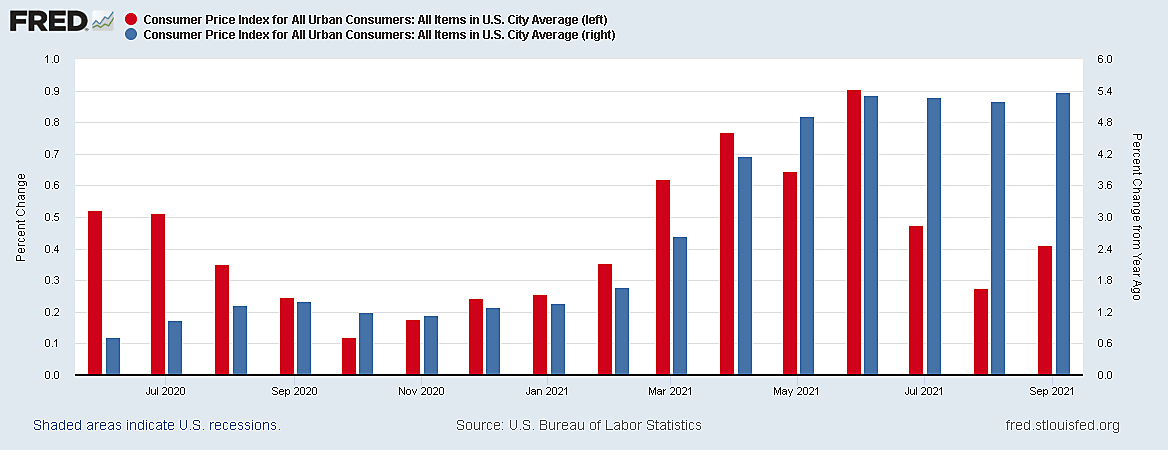A front-page headline screams “Inflation Is Back at Highest in Over a Decade.” That sounds as if inflation recently came back up to a record peak after a nice period of quiescence. Actually, inflation was twice as high from March to June as it has been since.
The lower numbers of the past three months are still bad enough, yet the difference between higher and lower numbers seems worth mentioning. Change seems to mystify and elude TV and newspaper reporters because they discount recent news and keep extolling “The Mystifying Arithmetic of Year-to-Year Inflation Estimates.”
Earlier this year, from March to June, inflation was rising twice as fast (0.73% a month) as it has since. On a year-to-year basis, the June CPI in was 5.32% higher than in June 2020 when we just starting to pull out of pandemic lockdowns. This September, the latest year-to-year change was still 5.38% – slightly higher than it was in June. Inflation must have sped up, right? On the contrary, the graph shows that the recent monthly pace of inflation has been reduced by half with no effect at all on the misleading yet newsworthy year-to-year changes.
In the past three months, the CPI rose by 0.39% a month. A year earlier, from July to September of 2020, the average monthly increase was 0.37%. Since monthly increases were the same, how could the year-to-year increases remain stuck at around 5.3% for June, July, August, and September? The reason the infamous year-to-year change is so hard to budge is that each monthly change is far more affected by ups and downs over the preceding 11 months than it is by the latest rise being half as large as four others included in the dozen.
In the spring of 2022, the year-to-year comparisons will finally be measured against the steep increases of March-June of 2021. After that, the spring 2021 increases will finally start to drop out of subsequent 12-month averages. Economic reporters may (or may not) then figure out that low year-to-year inflation headlines are statistically much easier to achieve if you base the comparison on high base numbers such as those of spring 2021 rather than the low COVID-19 lockdown numbers of 2020.

